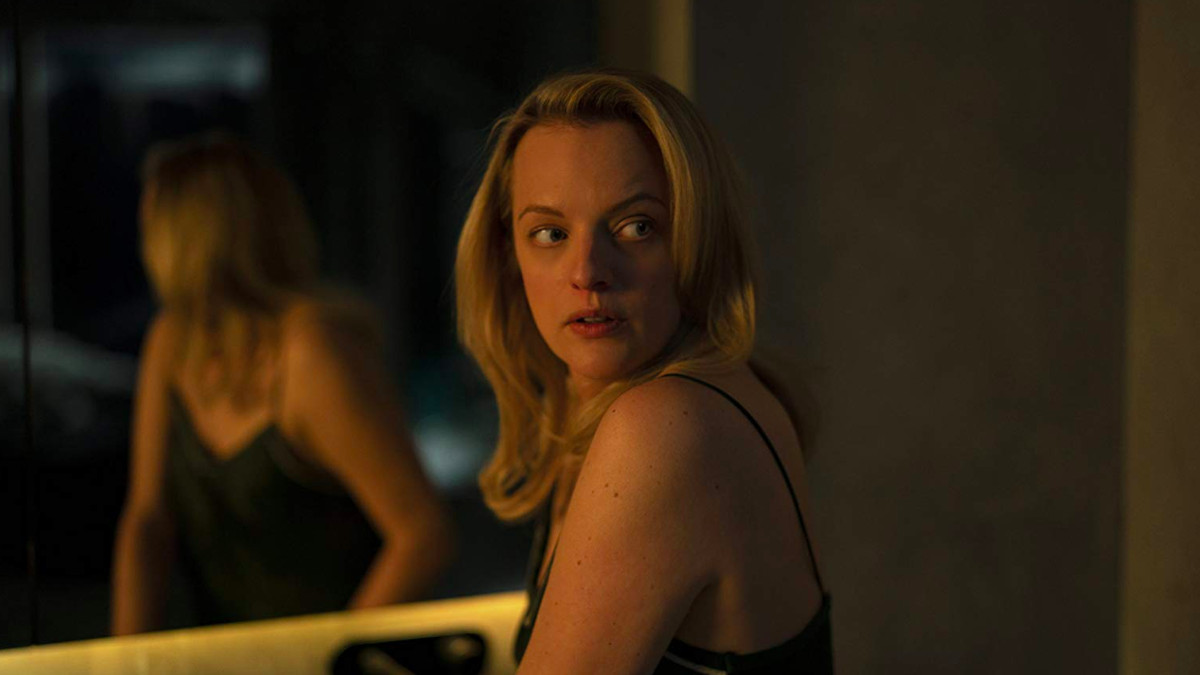 Back to selection
Back to selection
“Women of Blumhouse: Shaping Genre Storytelling at the Iconic House of Horror” at the 2020 SCAD Savannah Film Festival
 The Invisible Man
The Invisible Man Appropriately presented the day before Halloween, the SCAD Savannah Film Festival’s “Women of Blumhouse: Shaping Genre Storytelling at the Iconic House of Horror” provided an intriguing peek inside the multifaceted production house from a female POV. Moderated by Variety’s Deputy Awards and Features Editor Jenelle Riley, the three executives Zooming in included Blumhouse Television’s head of physical production, Lisa Niedenthal; Blumhouse Productions’ executive vice president of development for feature films, Bea Sequeira; and Blumhouse Productions’ head of casting, Terri Taylor.
There’s “so much emerging talent in this genre,” Niedenthal enthused when asked about working in today’s scary movie world. Though Niedenthal had been in the business since her time as a local Boston hire on 1987’s The Witches of Eastwick, she noted that her source material for projects was eclectic. (Currently, she finds herself especially drawn to podcasts.) The EVP also mentioned that once Blumhouse had put the word out that the company was looking for a more inclusive team, diverse material began coming their way. Ultimately, Blumhouse was attracted to ideas that got them “thinking on numerous levels.”
Turning to the pandemic, Niedenthal revealed that two of her projects actually got shut down right in the middle of production. With safety as a priority it forced the team to creatively look at scripts and to reassess what they could and couldn’t do. The limitations ultimately opened them up to new possibilities, including animation.
As for the Madrid-born Sequeira, she pointed out that horror is a genre into which one can “smuggle things” (especially social commentary). It was also the only genre she’d found that didn’t allow her “to be a control freak.” When asked what she specifically looked for when considering a project she emphasized the need to “be different, something we haven’t seen before.” That said, the EVP also received ideas in a wide variety of ways. (The week before, for example, she’d discovered a potential project through a tweet!)
Discussing Leigh Whannell’s The Invisible Man, shot in Australia, Sequeira revealed that the whole notion of seeing the main character from the victim’s point of view was what sold her on the script. It was also one of the last movies to be screened in theaters before the shutdown, which then prompted Sequeira to reflect on the communal movie theater experience so crucial for the horror and comedy genres. (Seeing Get Out at a test screening had been an especially memorable event.)
As for change within the industry, it will only happen when women are in positions of power, Sequeira emphasized. While diversity is a priority for Sequeira, there are so many exceptional women working in the horror genre (and that genre includes more than just the classic slasher flick, she was quick to add) that finding female filmmakers had really never been much of an issue for her.
After Taylor explained that the best way to study the craft of casting was to work under a top-notch mentor, she added that horror allows her to discover emerging talent more than other genres might. She sought out actors who were “grounded” and “relatable” — and brave enough to take chances — for the “extraordinary” stories that Blumhouse brings to the screen. She too missed the communal experience of the cinema – the collective escape taken through scary movies. Though she did find that collaborating mainly with women, who comprise “50% of the executives sitting around the table” at Blumhouse, was its own escape from an overwhelmingly male industry. (She also wanted us to know that those female gatekeepers “have loud voices.”)
As the hour wound down the moderator took a handful of questions from the virtual audience. One student asked about the so-called “impostor syndrome.” Sequeira jumped right in, urging her to “keep moving forward” and “make people uncomfortable.” “Never think, ‘I don’t belong here,’” she stressed. To which Taylor added, “It’s a journey.” The EVP of casting had personally struggled with feelings of inadequacy early in her career but eventually “embraced greatness.” “We belong here,” she seconded.
A question from the chat box then broached the subject of the genre’s troubling “women in peril” trope. Historically, horror often cast women as victims, Sequeira readily agreed. Showing women fighting back and “women not in peril” onscreen was a necessary remedy. (We’re “very vocal,” Taylor stressed; while Niedenthal noted that a story is actually much more interesting when you stay far away from stereotype.) Sequeira then pointed out that these days women and teenage girls make up some of their biggest audiences — thus it was important to inspire them. She “absolutely” felt a responsibility to being part of the change.
As for the closing query of what actually scares these horror mavens, three unexpected answers emerged in the end. Niedenthal admitted to being terrified of irrationality, Sequeira of “a lack of empathy,” and Taylor of extremism. While the following day may have been Halloween, one couldn’t help but think Election Day was much closer to mind.
